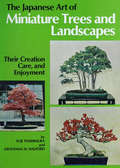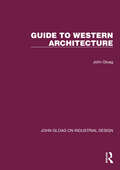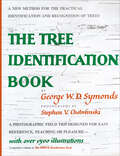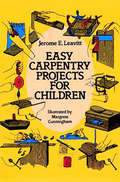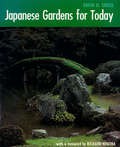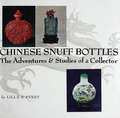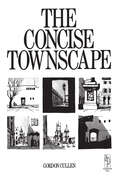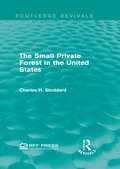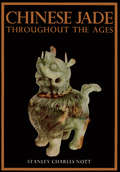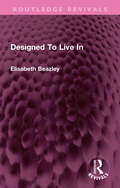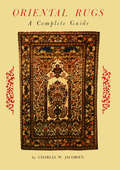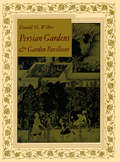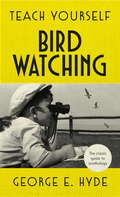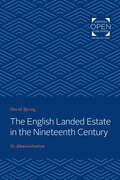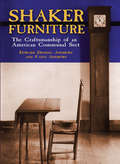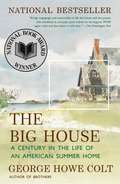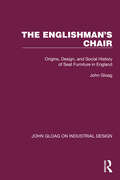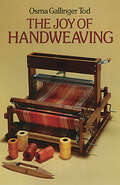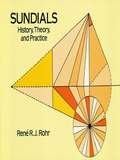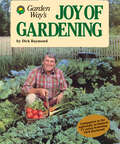- Table View
- List View
The Japanese Art of Minature Trees and Landscapes
by Giovanna M. Halford Yuji YoshimuraNOW AT LAST an eminently practical book about one of Japan's most fascinating arts. Japanese miniature landscapes and, particularly, dwarf trees-"bonsai," as they are frequently called even in the West-have long been admired throughout the world, and large sums have been spent importing them into other countries, often only to have them die. There is something so magical, unearthly even, about their gemlike beauty that their creation has generally been thought an occult science, and for the layman even their care and preservation have seemed to be shrouded in mystery. As this book proves, however, the creation and care of bonsai is a comparatively simple art which can actually be systematically taught rather than, as in earlier books on the subject, just talked about vaguely. Now, given a reasonably green thumb and a modicum of patience, anyonein any country can create his own bonsai; and still easier is it to apply the few matter-of-fact rules necessary to keep a finished bonsai in healthy and vigorous condition for generations. Here are detailed instructions, together with many helpful diagrams and charts and a treasury of photographs, on every phase of the art: propagation and training, with hints for those in a hurry and for small-apartment dwellers; daily and seasonal care, and treatment of pests; how to judge, select, and exhibit bonsai, with emphasis always upon the untold enjoyment they can provide. Included also, for those who want still more detailed information, are invaluable appendices concerning tools and equipment, soil analyses, and precise data on the more than three hundred species of plants used in making bonsai. This, then, is a definitive work, one which has long beenneeded and which will remain the bonsai book for years to come. It is a book for those who want to try their hand at a fascinating hobby; for those who, preferring to buy their bonsai ready-made, want to fulfill their responsibility of preserving such miniature loveliness; and for those who want simply to understand more about one of Japan's most treasured traditions, "sculpturing beauty in living wood."
Guide to Western Architecture
by John GloagOriginally published in 1958, A Guide to Western Architecture charts the origins of the system of architectural design that was perfected in Greece, follows its development under the Roman Empire and describes the achievements of the Byzantine architects. Passing through Romanesque to Gothic, the contributions made by Mediaeval builders to structure and design are recorded, and then the impact of the Renaissance on architecture, and its characteristic development in the different European countries. The transplanting of Renaissance ideas to the New World is covered, and finally the origins and nature of the new Western architecture occupy the last section of the book. The Appendix includes a list of the principal architects, and brief notes on their work, from the 5th century B. C. to the end of the Renaissance.
The Tree Identification Book
by George W. SymondsThe classic easy-reference field guide with more than 1500 photographs: &“An almost foolproof practical reference book.&” —Kirkus Reviews (starred review) This useful book for botanists, horticulturists, and nature lovers is made up of two parts: Pictorial Keys and Master Pages. The Keys are designed for easy visual comparison of details that look alike, narrowing the identification of a tree to one of a small group—the family or genus. Then, in the Master Pages, the species of the tree is determined, with similar details placed together to highlight differences within the family group, thus eliminating all other possibilities. All of the more than 1500 photographs were made specifically for use in this book and were taken either in the field or of carefully collected specimens. Where possible, details such as leaves, fruit, etc., appear in actual size, or in the same scale.
Easy Carpentry Projects for Children (Dover Children's Activity Books)
by Jerome E. Leavitt"All projects have been pretested for school use and are suitable for youngsters." — Bulletin of National Association of Secondary School Principals.What better way to learn than by doing? This thoughtfully conceived woodworking primer by educator Jerome E. Leavitt makes learning basic carpentry skills enjoyable and rewarding for boys and girls ages 8 and up. With special sections on basic hand tools, squaring a block of wood, and wood finishing, this unique how-to book presents step-by-step instructions for making 15 popular wooden items — all scaled to the beginner's capabilities: Sailboat, Clock Shelf, Bird Feeder, Candlesticks, Hot Dish Coaster, Towel Holder, Steamboat, Cart, Toy Sled , Birdhouse for a Wren, Book Rack, Shoeshine Kit, Table Lamp, Flower Box, and Tie Rack. Carefully planned to appeal to young woodworkers, each project includes clear, simple directions, enhanced by clean, accurate diagrams and attractive line drawings. New carpenters will beam with pride and accomplishment at having constructed useful, tangible objects to keep or to give as presents to parents or friends.
Japanese Gardens for Today
by David EngelWith extensive photographs and diagrams, this book explains the philosophy and practice of Japanese gardening.<P><P>An important classic of gardening instruction, Japanese Gardens for Today is a practical down-to-earth explanation of the basic rules of Japanese garden design and care. It is sure to prove of great value to both the professional landscape architect and to the green-thumbed home owner, whether he is designing an entirely new garden or only seeking an illusion of spaciousness and rightness in a tiny courtyard or corner.Photographs of historic Japanese gardens and the private, modern gardens of Japanese homes are given alongside useful rule-of-thumb practices and techniques. The books wealth of drawings are fully integrated with clear, succinct text to present the first full and practical treatment of the subject ever published in English.
Chinese Snuff Bottles
by Lilla S. PerryThis title was originally published in print form by Tuttle Publishing in 1960This book is not only an invaluable document for all interested in the history of Chinese art, but also a lucid and fascinating guidebook for the collector or would be collector, both of snuff bottles and other products of Chinese craftsmanship.
Concise Townscape
by Gordon CullenThis book pioneered the concept of townscape. 'Townscape' is the art of giving visual coherence and organization to the jumble of buildings, streets and space that make up the urban environment. It has been a major influence on architects, planners and others concerned with what cities should look like.
The Small Private Forest in the United States (Routledge Revivals)
by Charles H. StoddardThroughout the past few decades, the standard answer to the problem of low productivity in small private forests has been education. It has been assumed that the chief obstacle to "good" forestry has been lack of knowledge. But the stubborn persistence of the problem raises some doubts as to the efficacy of the remedy. In this book, first published in 1961, the author takes a sharper look at this problem. He tries to find out what has worked reasonably well, and what has not, and makes some suggestions as to what seems to offer the best prospects for the future. The Small Private Forest in the United States will be of interest to students of environmental studies, as well as to private landowners.
Chinese Jade Throughout the Ages
by Stanley Charles NottFirst published in 1936 and since then a collector's item of increasing rarity, Chinese Jade Throughout the Ages comprises a review of the characteristics, decorations, folklore, and symbolism of this esteemed mineral that has always held a proud place among gems of the world. The book presents a full descriptive account of the significance and meaning of the carvings produced in this prize stone by Chinese craftsmen from the earliest times, through the Chou and succeeding dynasties, down to the twentieth century.
Designed To Live In (Routledge Revivals)
by Elisabeth BeazleyOriginally published in 1962, this book traces the main influences behind modern design in domestic architecture. It does so against the context of the effect each new dwelling has on its environment and the effect its design has on those in the surrounding (and often older, historic) housing stock. Diverse influences such as the bye-law street and Le Corbusier’s Ville Radieuse are discussed, while the ideas bearing on the individual private house range from those of the early nineteenth century villa builders to Frank Lloyd Wright’s prairie houses and the work of Mies van der Rohe. The book closes with a detailed discussion of the problems and possibilities of domestic design in house-building in the late 20th Century
Oriental Rugs a Complete Guide
by Charles W. JacobsenThis authoritative reference contains a vast amount of information about Oriental rugs.<P><P>Oriental Rugs: A Complete Guide is the first large volume on the subject to be printed in the past forty-five years is meant for the individual who is interested in purchasing his first Oriental Rug, as well as the collector, museum, and rug importer.The volume is divided into three main parts. Part I, entitled "General Discussion devotes one chapter to each of the large rug weaving countries and includes helpful hints as to what the rug buyer should look for in an particular rug.Part II, "Description of Types," is an alphabetical list of all the names that have been used to identify rugs in the past, as well as the names that are being used at present. Each entry is followed by a full discussion and description of the rug.Part III, "Plates," contains 194 pictures of different types of rugs, complete with descriptive captions for each. Thirty-nine of the plates are in full color. All of the plates are large, allowing the reader to see the design, and in some cases, the colors used in the particular rug.
Persian Gardens & Garden Pavilions
by Donald N. WilberThis Persian gardening book showcases classic gardens and pavilions and presents gardening advice for the aspiring amateur landscaper looking to add an Eastern flair to his or her yard.The garden has always had a special meaning for Persian (Iran). <P><P>The Persian garden, with its flowing pools, fountains, waterways, rows of tall trees, rich arrays of fruit trees and flowers, and cool pavilions, has represented an image of paradise.Persian Gardens & Garden Pavilions is both a comprehensive survey and an appreciation of this Persian tradition of gardens and garden pavilions. The text traces the historical development of Persian gardens, describes their basic features, presents existing examples, and discusses the literature and tradition behind them. The 119 illustrations include detailed plans and photographs of surviving gardens and their pavilions made on the spot, as well as a comprehensive collection of paintings, lithographs, and drawings of the nineteenth century executed both by Persian artists and by European travelers and emissaries of the period.The author points out, the gardeners who read this book should come across many details and ideas that can be incorporated into their own kinds of gardens.
Teach Yourself Bird Watching: The classic guide to ornithology
by GE HydeWith a few sorry exceptions, it's heartening to think that the gardener or bird-spotter of the 1950s or 60s would immediately recognise most of the songs that sing out over English gardens today. For the amateur ornithologist of the twenty first century, Teach Yourself Bird Watching will be as much of a delight now as it ever was - a beautifully written, precise guide to identifying, protecting and encouraging birdlife in your garden and beyond.Since 1938, millions of people have learned to do the things they love with Teach Yourself. Welcome to the how-to guides that changed the modern world.
Teach Yourself Bird Watching: The classic guide to ornithology (Teach Yourself)
by George E. HydeWith a few sorry exceptions, it's heartening to think that the gardener or bird-spotter of the 1950s or 60s would immediately recognise most of the songs that sing out over English gardens today. For the amateur ornithologist of the twenty first century, Teach Yourself Bird Watching will be as much of a delight now as it ever was - a beautifully written, precise guide to identifying, protecting and encouraging birdlife in your garden and beyond.Since 1938, millions of people have learned to do the things they love with Teach Yourself. Welcome to the how-to guides that changed the modern world.
Narcotics: Nature's Dangerous Gifts
by Norman TaylorInformation on marijuana, opium, morphine, heroin, coca, cocaine, alcohol, tobacco, ololiuqui, peyotl (mescaline), pituri, fly agaric, caapi, kava, betel, coffee, chocolate and tea.
The English Landed Estate in the Nineteeth Century: Its Administration
by David SpringOriginally published in 1963. The English Landed Estate in the Nineteeth Century: Its Administration deals principally with the administration of large landed estates during the years from 1830 to 1870. The book also throws new light on the work of the Inclosure Commissioners, who, as a department of the central government, supervised agricultural improvements made by landowners who borrowed from the government and from land companies. Author David Spring argues that the British government intervened in agriculture much more than is commonly thought. In describing the hierarchy of estate management, Spring relies, wherever possible, on hitherto unused family papers and estate documents. Especially important is his material on the Dukes of Bedford and on the domestic economy and financial position of the Russell Family. The chapter titled "The Landowner," based on the seventh Duke of Bedford's correspondence with his agent, is a case study of a single estate and provides insight into the workings of a great landowner's mind. The remaining chapters, dealing with lawyers, land agents, and the Inclosure Commissioners, include other individual portraits. Among these are Christopher Haedy, the Duke of Bedford's chief agent; James Loch, king of estate agents in nineteenth-century England; Henry Morton, the Earl of Durham's land agent; and William Blamire and James Caird, two of the Inclosure Commissioners.
Bonsai: The Art of Dwarfing Trees
by Ann Kimball PipeThis book offers to the beginner the basic foundations for Bonsai, and for growing plants in pots. The book covers topics such as finding suitable trees, potting, watering, trimming, plant health, and much more. There is a separate section for discussing the shaping of different bonsais into the beautiful shapes. The book also offers a fairly good list of plants to try for planting as bonsai.
Shaker Furniture
by Edward D. Andrews48 sharp photos show side chairs, long benches, rocking chairs, chests, cupboards, much more. Exact measurements given for each piece to aid in identification, reconstruction, restoration. Also--highly readable commentary on sect's cultural background.
The Big House: A Century in the Life of an American Summer Home (An Award-Winning Memoir)
by George Howe ColtFaced with the sale of the century-old family summer house on Cape Cod where he had spent forty-two summers, George Howe Colt recounts returning for one last stay with his wife and children in this stunning memoir that was a National Book Award Finalist and a New York Times Notable Book of the Year.This poignant tribute to the eleven-bedroom jumble of gables, bays, and dormers that watched over weddings, divorces, deaths, anniversaries, birthdays, breakdowns, and love affairs for five generations interweaves Colt&’s final visit with memories of a lifetime of summers. Run-down yet romantic, The Big House stands not only as a cherished reminder of summer&’s ephemeral pleasures but also as a powerful symbol of a vanishing way of life.
The Englishman's Chair: Origins, Design, and Social History of Seat Furniture in England
by John GloagOriginally published in 1964, The Englishman’s Chair is a history of English chairs, written as a continuous story from the 15th to the 20th Century and because of the revealing powers inherent in chair-making and design, it is also an unconventional footnote to English social history. The changes in taste, and fashion, the increase of skill, the introduction of new materials and the long battle between dignity and comfort are discussed, as is the impact that modern industrial designers have had on chair design.
The Joy of Handweaving
by Osma TodThis is the first paperback edition of a manual well known to weavers for its great thoroughness, clarity, and value to beginning and professional weavers alike. The author has drawn upon many years of experience as a teacher and writer in preparing this practical text of basic weaving techniques and projects from the simplest to the extremely complex.Each topic of weaving theory and technique is presented with its practical applications in mind. Within the first thirty pages, readers learn enough to complete their first weaving project, a bookmark, and this leads directly to the weaving of rugs on a loom, the process of weaving on a two-harness loom, threading plain weave from a draft, making a two-harness table loom (readers following the clear diagram and instructions will have no trouble building the loom), preparing the weft, handling of threads, two-harness design methods, the weaving of rag rugs in plain weave, useful articles woven with striped warps and wefts, tapestry techniques, and design weaves.For advanced weavers, the second major section of the book covers a great variety of weaves for the four-harness loom and related information: how to warp and thread a four-harness loom, weaving both plain and pattern weave, the twill family of weaves and herringbone variations, the principles of overshot pattern weaving, the diamond or cross family, the monk's belt pattern and its uses, practical overshot patterns, designing drafts and special techniques, ways of weaving overshot, special four-harness techniques (summer and winter weave, the Bronson weave, the M's and O's weave, the crackle weave, the waffle weave, matta technique, syncopation, double weaving on a four-harness loom).The author then details multi-harness weaves such as multi-harness twill, eight-harness damask design, and several others. Then follow discussions of the uses of color in weaving designs, planning borders, the various draft notations (European and American), weaving with synthetic fibers, thread sizes, counts and yardage, and costs of handwoven fabrics. There is a thread chart of warp settings and suitable wefts. A final chapter gives instructions for making several projects from hand-woven fabrics (a folder for linens, a small ornamental box, jackets and suits, and others). The text is fully illustrated throughout with photographs and labelled diagrams.
Consider the Lilies
by Alfreda Oko Martin Edward MartinJapanese flower arranging has attracted a world wide following, and this book is a simple and clear introduction to the art.The first section illustrates thirty-six suggested flower arrangements with diagrams and full how-to-do-it instructions. The second part of the book explains the theory and technique of Japanese flower arrangement. The result is a book which gives an astonishing range of flower arrangements, clear explanations of how to make them at home, and an inspiring selection of devotional passages.
Sundials: History, Theory, and Practice
by René R.J. Rohr"His lively pen, his direct and simple style, his expressive vocabulary, his avoidance of pedantry, his conciseness in the exposition of his thoughts make his book a pleasure to read." -- Henri Michel, International Academy of the History of ScienceThe story of man's efforts to measure time is a long one -- reaching back thousands of years to the dawn of civilization. Among the earliest instruments developed for telling time was the sundial. In this expert study, a noted sundial expert offers a fascinating and informative account of these ancient devices, presented in simple, lively language.Over the centuries, many different varieties of sundials have been constructed, and Mr. Rohr provides detailed, accurate descriptions of them all: classical sundials, inclined dials, solar calendars, analemmatic dials, moon dials, and many more. There is even a chapter devoted to especially remarkable dials past and present, and a listing of the most popular sundial mottoes. In this profusely illustrated volume, you will not only learn about the long and colorful history of the sundial, you will learn a practical method of building one yourself. No special knowledge is required, other than an understanding of the basic principles of cosmography and of the relative movements of the sun and the planets. (These are recalled in an elementary way in a special chapter.) For mathematically inclined readers, more complex formulae and calculations have been included, some of which have never been printed in a book of gnomonics.
Joy of Gardening
by Dick RaymondFull of useful tips and practical garden wisdom, this straightforward guide shows you everything you need to know to grow a more bountiful harvest with less work. Stressing the utility of raised beds and wide rows, gardening expert Dick Raymond shares his time-tested techniques for preparing the soil, starting plants, and controlling weeds. With helpful photographs, clear charts, and profiles of reliable garden vegetables, Joy of Gardening will inspire you to grow your best crop ever.
Handy Crafts From Scraps: A Collection of Illustrated How-To-Make Articles from Scrap and Inexpensive Materials
by Olive HowieRead this book and you will be able to make nice gifts without spending much money. Includes such projects as: clown bank, sponge holder, sewing basket, letter holder, dog bookend and many more items. Simple ideas and clear instructions.
